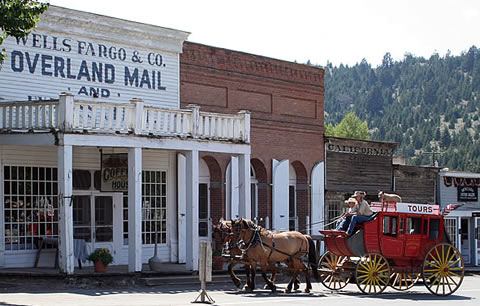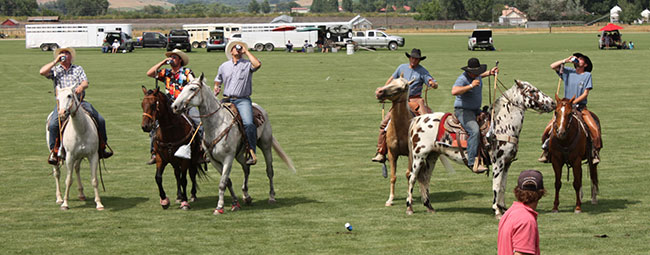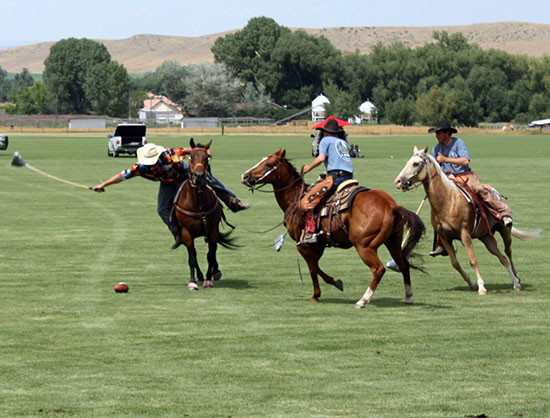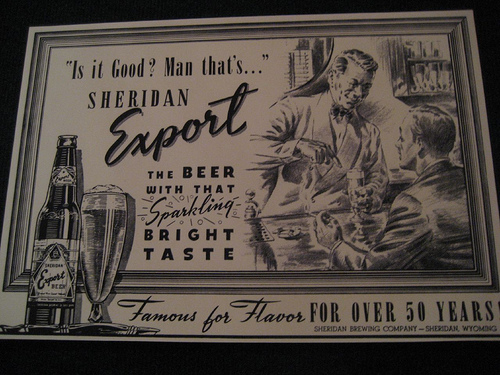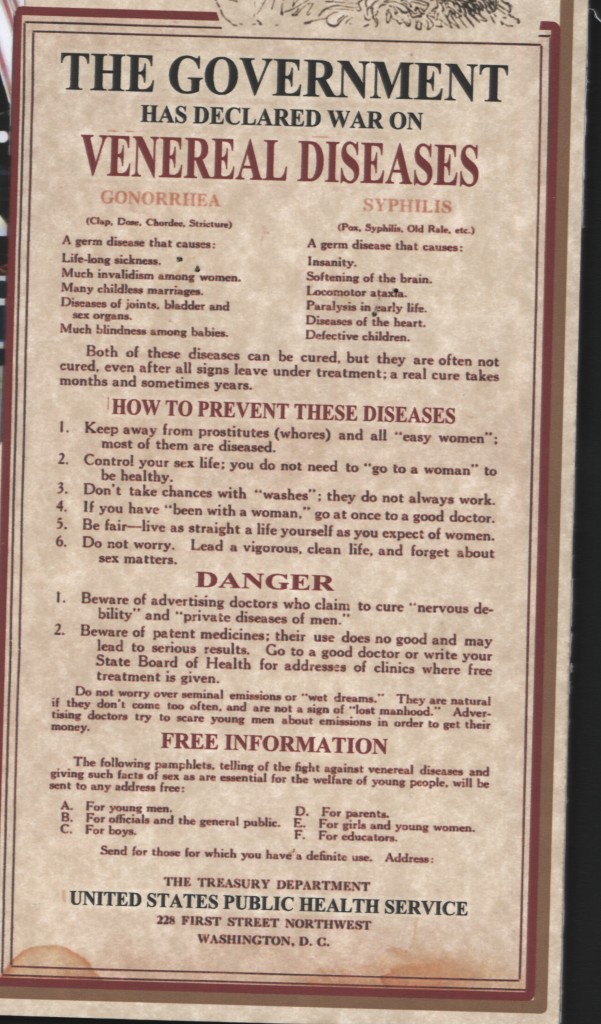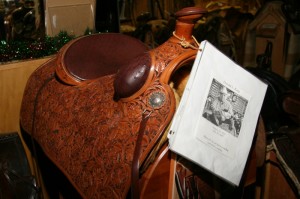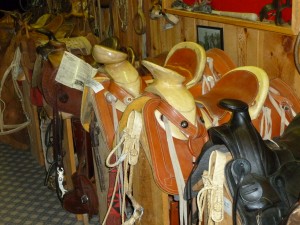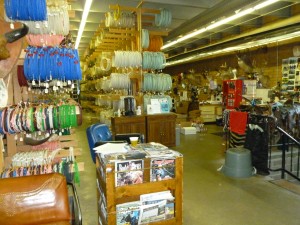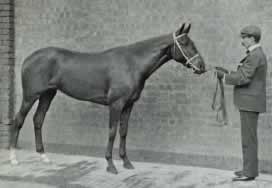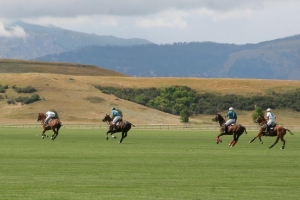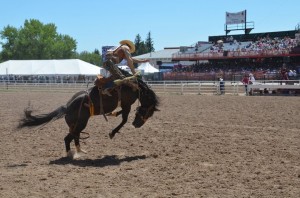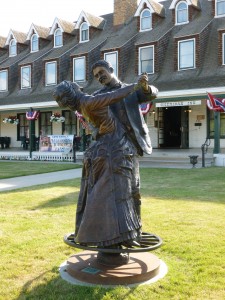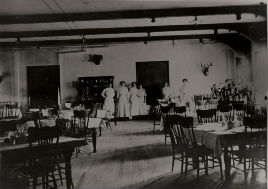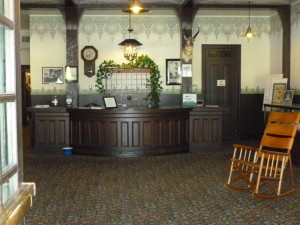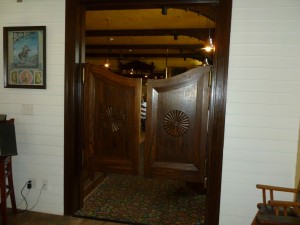Howdy All– I’m over at Prairie Rose today blogging about my upcoming release HOME FIRES and the wildest town in the West, Virginia City! Hope to see y’all over there!
Category Archives: Old West History
CONNOR BATTLE: A TRAGIC BEGINNING
Let me tell ya folks, Cookie and me stumbled on a piece of history we just plum hadn’t heard of before. (The roll of Cookie was played by my parents when they came to visit and we hit the trail). We decided to enlighten y’all, so you can look smarter than us. We’ve heard of Fetterman, Crook, and of course who can forget Custer, but our ears never picked up on the name Brigadier General Patrick E. Connor.
Now General Connor was assigned to command the Powder River Expedition in present day Northeastern Wyoming. His orders were to make war on the Indians forcing them into submission to maintain peace. I know, sounds like same song second verse. But actually, Connor was one of the first commanders in the area so the snowball started with him.
August 29, 1865 (less than a year before Fort Phil Kearny was established), Brigadier General Patrick Connor with 125 cavalry and 90 Pawnee scouts attacked Chief Black Bear’s Arapaho camp along the Tongue River. Black Bear’s camp was comprised of 500 inhabitants, however many of the young warriors were farther North on a raid against the Crow.
Connor’s men made war on those Arapaho present disregarding the fact it was mainly women and children. Captain Palmer reported, “Unfortunately for the women and children, our men had no time to direct their aim; bullets from both sides and murderous arrows filled the air; squaws and children, as well as warriors, fell among the dead and wounded.”
The warriors present made a stand providing their families the opportunity to escape. The Arapaho fled up Wolf Creek. Connor followed with a contingent of soldiers. He was driven back. The majority of his men stayed behind destroying the village including tipis, food and winter supplies. This gave the Arapahos time to launch and aggressive counter-attack, driving Connor down the Tongue River.
Only the use of howitzers held the Arapahos at a distance during the withdrawal, and saved the out-numbered soldiers. The Arapaho suffered 64 casualties and several hundred ponies. It is believed this engagement caused the Arapaho, a non-hostile people previous to the attack, to attack the Sawyer Expedition two days later.
Where the Bozeman Trail crossed the Tongue River Valley, Colonel J.A. Sawyer’s wagon train and road building expedition of 82 wagons fought the Arapaho for thirteen days. Captain Cole of the military escort was killed along with E.G. Merrill and James Dilleland, drovers. The siege ended when Connor’s army rescued the wagon train.
Instead of “subduing” the Arapaho, Connor’s attack is believed to have been influential in causing the Arapaho to ally with the Sioux and Cheyenne at the Fetterman Fight the next year, and to fight at the Rosebud and the Battle of the Little Bighorn.
Were any lessons learned from the Connor Battle…Nope. Sorry to say folks, but the soldiers moving into the area kept underestimating the American Indians and paying a high price until numbers in people moving West and superior weapons did what armies never could.
SOURCES:
SHERIDAN COUNTY HERITAGE BOOK. Sheridan County Extension Homemakers Council. 1983.
http://www.philkearny.vcn.com/connorbattlefield.htm
POLO AND MY CURRENT COWBOY HERO!!
The Ace High authors over at Wild and Wicked Cowboys kindly offered to host me, so I’m movin’ the campfire this Saturday, March 23rd!! Hope y’all will join me over there where I’m jawin’ about Polo in Wyoming and how it helped me create the hero in my current WIP!
For your enjoyment and as a thank you for stoppin’ on by, here’s a couple pictures from last summer’s Cowboy Polo match between the wranglers of two dude ranches here in the Sheridan area!
Each player was required to drink a can of beer, then play the first chukker.
After a brief half-time, another can of beer and another chukker.
The ball was destroyed during the first chukker, so the second period was played with a fooball.
Head on over the Wild and Wicked Cowboys to read how the “sport of kings” ended up in the “King of the Cowboy Towns!”
**Both photos were used with the permission of Perk Connell at the Big Horn Polo Club, Sheridan, Wyoming
WHO’S THAT COWBOY AND WHAT HORSE DID HE RIDE IN ON: THE WYOMING BUCKING HORSE AND RIDER!!
Now Cookie and me bein’ the perceptive types know y’all have been ponderin’ one question over and over. What horse and rider is depicted as the symbol for Wyoming?
Well folks the hard and fast answer is… we don’t know. Thanks for stoppin’ by today, see ya next time…What’s that Cookie? Oh, alright don’t go workin’ yerself into a fit of apoplexy. Have I ever let these good folks leave the campfire without a good story…Don’t answer that.
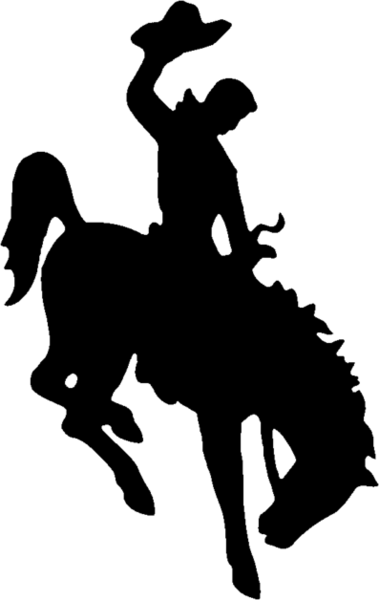 Popular belief holds the bronc is the legendary Steamboat. Although there always has to be someone who disagrees and in this case that someone is the University of Wyoming. Their source claims the bucking horse and rider (BH&R) are “Stub” Farlow on a horse named Deadman. However, the University claims the bucking horse and rider used as the University’s logo is Steamboat with crack buster Guy Holt holding on.
Popular belief holds the bronc is the legendary Steamboat. Although there always has to be someone who disagrees and in this case that someone is the University of Wyoming. Their source claims the bucking horse and rider (BH&R) are “Stub” Farlow on a horse named Deadman. However, the University claims the bucking horse and rider used as the University’s logo is Steamboat with crack buster Guy Holt holding on.
But we’re not going to listen to the University. We’re going to go with everyone else in Wyoming because we like them better. So, let’s start with the bronc, Ol’ Steamboat.
The year Steamboat foaled is also disputed. I’ve found anywhere from 1894 to 1901. We can discount 1901 since Steamboat “first attracted public attention at the Festival of Mountains and Plains in Denver in 1900.” (Pro Rodeo Hall of Fame). But he was foaled on the Foss Ranch in Wyoming. While gentle when led by Frank Foss’s young son, no ranch hand could hold him long enough to get a saddle on his back. Foss realized the black colt was never going to be a cow pony and sold him to the Two Bar Ranch in Bosler, Wyoming.
Busters at the Two Bar were the only ones busted by the wild horse. The top buster, enraged at being bested by the big black hit the horse across the nose with the butt of his quirt. The blow damaged the horse’s nasal cavity and ever after the horse whistled like a steamboat whenever he got riled up and started bucking. From Texas to Canada the legend of Steamboat “the whistlin’ hoss” was known.
Steamboat was sold to John Coble of Bosler not long after the cruel incident that gave him his name. Coble saw the black for what he was and began entering him in rodeos such as the Festival of Mountains and Plains and Cheyenne Frontier Days Rodeo. The bronc started taking first place from the start, and much to the pain and suffering of many a cowboy his career was off and bucking.
“I’ve seen ’em all for 65 years and I never saw a buckin’ hoss to top Steamboat. First off, he was big and powerful—1,100 pounds—and tireless. Fact is, he was the closest thing to perpetual motion that ever wore hair. He’d start to squat when they threw the saddle on him and by the time the bronc buster was set in the stirrups Steamboat’s belly’d be almost touchin’ the arena dust. Then, the second they’d jerk that blindfold he’d explode! He’d bust out to the middle of the arena as if he wanted the stage all to himself and he’d put on the damnedest exhibition of sunfishing and windmilling I ever seen. His best trick was to swap ends between jumps and come down ker-slam on four ramrod legs. His head and forelegs would be twisted one way and his rump and hind legs another. When he was goin’ all out, he seemed to be on a great big invisible pogo stick. Few men could stand that kind of battering without bleeding from the nose, and most became nauseated as well. Sometimes, no matter how tight a rider laced his buckin’ corset, he’d wind up with broken ribs. Bronc riders are harder’n scrap iron, but ol’ Steamboat put some of the toughest into the hospital for repairs.” (Rodeo buff Jack Bowers in Sports Illustrated interview)
It’s difficult to compare the broncs of yesterday to those in today’s rodeo. Horses did not exit a chute, but were “snubbed to the saddlehorn of a rider” or blindfolded while the rider mounted and then turned loose. Horses were ridden for 30 seconds, or sometimes until they stopped bucking. Regardless of the changes to the sport, Steamboat remains one of the greatest bucking horses of all time. To his last event he never stopped bucking with all he had.
Coble sold Steamboat to Charley Irwin who operated a Wild West Show with his brother. In 1914, Steamboat met a sad end when he contracted blood poisoning after running into a barbed-wire fence.
Steamboat earned the moniker, “the horse that couldn’t be ridden” from his early days at the Two Bar. The truth was, the bronc was ridden by some of the best bronc busters of the early 20th Century including: Harry Brennan, Clayton Danks, Guy Holt, Tom Minor, Dick Stanley and Thad Sowder.
Who’s the cowboy riding Steamboat on the State symbol? We don’t know…Once again thanks for coming…Okay, okay…
Over the years the debate has been whittled down to Albert Jerome “Stub” Farlow from Lander who rode Steamboat (for a little while at least) at the Albany County Fair Grounds, or Guy Holt. Holt rode Steamboat in Cheyenne.
But I have to agree with the University of Wyoming whichever horse and rider inspired the symbol “the bucking horse and rider represents the toughness and never-say-die spirit that is Wyoming.”
What we do know about the symbol. The first use of the Bucking Horse and Rider dates back to 1918. It was used as an insignia worn by members of the Wyoming National Guard in France and German during World War I. The insignia used by soldiers was designed by First Sergeant George N. Ostrom of E Battery, 3rd Battalion, 148th Field Artillery Regiment, AEF. The United States Army adopted the insignia and used it as a means of identification on gun trails, trucks, helmets and other equipment. The BH&R was used extensively by Wyoming units during Korea, Vietnam as a rallying point and “symbol of pride and reminder of home.”
In 1935, then Secretary of State Lester Hunt (he later became Governor) proposed changes to the Wyoming license plate design. He commissioned Mr. Allen T. True to “put to paper” his concept, which included the Bucking Horse and Rider. In 1936, the famous Bucking Horse & Rider license plates debuted and the State obtained copyright for the image.
Wyoming’s license plates have gone through many changes over the year, but every plate design included the famous Bucking Horse and Rider. No matter which horse and rider is depicted every Wyomingite displays this symbol with pride.
There ya go folks. Now y’all can sleep well tonight knowin’ the answer to this burnin’ question, or ya can toss and turn fightin’ about which horse and rider is depicted. Either way, I feel Cookie and me have done some good today.
Speakin’ of my coffee makin’ rattlesnake of a partner and myself, y’all will notice the blog has been cut to once every other week. This might be how the trail goes for a mite longer as we get adjusted to our new campfire. I’m sorry we won’t have time to host all those top hand authors, and while we might bring one round the campfire now and again, I just can’t give my word to ‘em that I can do justice to their ace high stories…and ya know what they say ‘bout a woman’s word on the trail. As for another short story…well I just might have one of those bloomin’ come spring.
Hope y’all will stick with Cookie and me as we adjust to the trail and get all our mavericks herded. Oh, and if ya’d like to mosey on over to the “About” area I’ve added a bit more.
Help yourself to a bit more of Cookie’s coffee iffin’ ya can stomach it, and feel free to sit ‘round the campfire and debate those bucking horses and bronc bustin’ cowboys.
If ya want to read more about Steamboat a good read is: Steamboat, Legendary Bucking Horse: His Life and Times, and the Cowboys Who Tried to Tame Him by Candy and Flossie Moulton.
SOURCES:
http://sportsillustrated.cnn.com/vault/article/magazine/MAG1083607/1/index.htm
http://www.gowyo.com/trads/steamboat.html
http://www.wyomingtalesandtrails.com/steamboat.html
http://www.prorodeohalloffame.com/inductees/by-category/livestock/steamboat/
http://soswy.state.wy.us/Services/BHRHistory.aspx
POP A TOP IN SHERIDAN, WY!! THE SHERIDAN BREWING COMPANY!
Good as Cookie’s coffee is, after a long day of fillin’ up on dust on the trail ya wanna sit back with a cold brew or soda pop…Oh yeah, cowboys love a grape or orange pop, look it up… And the place brewin’ up the best is the Sheridan Brewing Company!
In 1887, Arnold Tschirgi, George Paul, and Peter Demple, joined forces to found The Sheridan Brewing Company. First they had to avoid robbers’ intent on stealing the business’s start-up money. Thieves were common along the Cheyenne to Deadwood stage line. So, the men sent the $10,000 in gold by the Northern Pacific Railroad to Custer Station, and transported the capital the rest of the way by wagon. By 1888, the brewery distributed its first product.
A year later, in 1889, The Sheridan Brewery expanded its operations, producing millions of 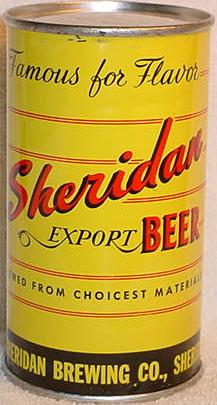 barrels of beer before Prohibition in the 1920s. Undeterred by this law, the brewery shifted to new products like near beer Sherex and an assortment of fruit-flavored soft drinks.
barrels of beer before Prohibition in the 1920s. Undeterred by this law, the brewery shifted to new products like near beer Sherex and an assortment of fruit-flavored soft drinks.
By the end of Prohibition in 1933, the brewery was producing 600 barrels of bear a day. By 1954, 60,000 barrels a year left the brewery, and at this time the Sheridan Brewery stopped its beer operations and focused on soda pop. That same year the brewery became the first company in the United States to bottle its products in flat-topped cans.
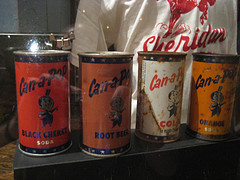 The Can-a-Pop Beverage Company quickly became the leading producer of canned soft drinks larger than any other plant in America. Franchises started up in Los Angeles and Compton, California and Peoria, Illinois. But as quickly as Can-a-Pop sprung to the top, its bubble was popped by such brands as Coca Cola, Pepsi, Fanta and Nehi. These brands held national recognition and advertising and edged out the hometown soda company.
The Can-a-Pop Beverage Company quickly became the leading producer of canned soft drinks larger than any other plant in America. Franchises started up in Los Angeles and Compton, California and Peoria, Illinois. But as quickly as Can-a-Pop sprung to the top, its bubble was popped by such brands as Coca Cola, Pepsi, Fanta and Nehi. These brands held national recognition and advertising and edged out the hometown soda company.
The brewery was torn down in 1994, and a park is now at the spot of Sheridan Brewing Company. But never fear there are still plenty of places in Sheridan, Wyoming to have a cold one…Right Cookie?
SOURCES:
Pictures from the Sheridan County Museum
Blair, Pat, Prater, Dana and the Sheridan County Museum. Images of America: Sheridan. Arcadia Publishing, 2008.
BEHIND THE LOCKED DOORS OF SHERIDAN’S ROOMIN’ HOUSES!!
Well lookey here, can y’all believe it’s another year gone by? Cookie and me, we’ve been settlin’ in back home in Wyomin’ and WHOO-EEE the campfire sure does smell sweeter out here!
2013 is the 125th Anniversary of Sheridan County Wyoming!! YEEE-HAW!! So throughout the year, I’ll be sharin’ some of the highlights of this county! All of my stories are set in this area of Wyoming, or have ties to it, and after readin’ a bit about its history, y’all will know why!
Today we’re gonna visit the sportin’ houses of Sheridan. Cookie, bless his soul, offered to “interview” the gals! Cookie now has a bump on his head where a cast iron skillet “slipped” from my hand. J
‘Nough of that, let’s get goin’…
March 9, 1888, Sheridan County Wyoming was founded with the county seat being the town of Sheridan. Ranches, mines, railroads, mills and a brewery all became important entities of Sheridan’s history. As much a part of this history were Sheridan’s brothels. The town’s red light district boomed from 1888 through the early 1900s with the last of the “houses” closing in the 1960s.
The Sheridan County census, in 1900, listed Jane Stewart “Missoula Jane” and along with six other “dressmakers” and two “laundresses” living on Val Vista and First Streets. Police records that same year recorded Jane Stewart’s arrest for renting a house to Ida Fitzgerald for prostitution.
Lizzie Lane ran a house on East Grinnell Avenue. Lizzie came from Kentucky, as did the cook she brought with her. Her seven girls, all black, ranged in age from 22 to 29 and came from various parts of the South.
Fifteen Ladies of Ill Repute were arrested for violating Ordinance #72, Sect. 3. Thirteen of the girls were fined $5.50 each. Two, Nellie Lay and Vivian Crawley were fined $15.50, leading researchers to believe their higher fine meant these women were the proprietors.
Despite arrests and fines, by 1910, houses of ill repute lined East Grinnell Street. Main Street, North Connor and Custer also had a few houses scattered among other businesses and residences. The census listed 70 “soiled doves” in business. They are listed as inmates in houses of prostitution or proprietors. Sixteen houses are marked F.B. on the city’s map. This meant there was a female border (i.e. prostitute) at that house.
A further look at the city’s census records from the early 1900s sheds light on why “female borders” were choosing to settle in Sheridan. At this time Sheridan had a population of 10,000, with the majority of the population being very young men in their 30s and unmarried. Sheridan, the city and the county, was a region of mines, railroads, construction jobs, and of course cowboys.
It was also a time of few choices for women if they were single, divorced or abandoned. One researcher found that “out of 39 of the prostitutes on the census were single, seven divorced, 17 had been married, or were married, with a total of 12 children.” (George Gligoria)
Some of the “respectable” women of Sheridan benefited from the working girls selling them dishes and making their clothes. One woman remembers her aunt making dresses, slippers, handbags and lingerie for the girls during the early 1900s. Though she managed a peek at some of the items, her aunt kept the lingerie well hidden from prying eyes. She also never saw the girls and didn’t know if they came to the house, or her aunt went to them.
She recalled the skirts being “hobble skirts; tight from the hip down with a drape up to the knees…Some were split. They were very tight. Girls could hardly walk in them. They were sleeveless with a low-cut neckline.” Surprisingly, the dresses had no frills like lace or beads, but they were always made of satins in shades of pinks, greens, yellows, and blues. Their slippers were covered in satin to match. Cantaloupe seeds would be washed, dried and strung to tack on the satin handbags and the dresses. As the girl walked the seeds would shake and show satin.
Not all of the soiled doves in Sheridan wore satin. As in most places there were four levels of prostitution in Sheridan. From the elegant parlor houses like The Castle to the middle-class saloons and finally the cribs and hog ranches that catered to the lowest class of men. Street walking was all but eliminated in the city by arrests and fines. There was a limit to what was acceptable to the citizens of Sheridan.
By 1919, there was a shift to the Red Light district from Grinnell to Main and East Works. Prostitution houses included My Hotel, Rex Hotel, Irma Hotel, Elgin Rooms, the Shirley House, and a sheep wagon parked behind Crescent.
Prohibition failed to curtail prostitution in Sheridan. There were more arrests, but through the 1930s the Rex Hotel, the Irma and the Antlers and the Palm rooms continued to operate without interruption. Side note: Prohibition didn’t curtail drinking in Wyoming either because…it’s Wyoming, but that’s a story for another day.
One of the most infamous madams was Pearl Logan, born Pearl Colett. Although Pearl ran a series of rooming houses for over 40 years, she is best known as the proprietor of the Rex Hotel from 1930 to 1960. Five working girls resided in the large rooming house. During her long rein at the Rex, Logan secured a strong affinity with law enforcement, tenants and the girls. Sheepherders and cowboys who came to town for a bender, or for an entire off -season trusted Pearl more than the local banks and left most of their earnings with Logan. She kept their money safe from gambling tables and thieves and a cowpoke’s summer wages remained safe.
When the U.S. Government decided to get tough on sexually transmitted diseases, Pearl did her part posting the pamphlets around the Rex. The Rex closed in 1965, along with all the big houses, when County Attorney Henry Burgess ran a campaign to stop prostitution and gambling. Pearl Logan died in 1977.
Despite the taboo of their profession the women were said to be “extremely clean, well-cared for by doctors and very likable.” The women who sold items to them described them as nice women.
A cab driver from the early 1950s said the girls were great tippers. They would tip 50 cents to a dollar on a fare of 35 to 40 cents. However, as nice as he thought the girls were he transported them “solo” rather than with other customers.
Whether parlor house or crib, these women lived harsh lives often cut short by disease or violence, but the fact is these women lived and contributed to the history of Sheridan. Some of the women were able to secure a bit of respect, and from what I could find most were considered kind and generous by many of Sheridan’s citizens.
This is not meant to be the whole story, just a small peek behind the locked doors of Sheridan’s rooming houses.
“No, Cookie, ya can’t do further research! Ya just get yerself back to the campfire and stay away from the Rex!” Ol’ dirty codger…
I better go make sure he don’t get sidetracked! See y’all next time!
SOURCES:
THE SHERIDAN PRESS. “Working Girls: Early Sheridan Haven for Brothels.” Saturday-Sunday, August 21-22, 1999. pgs. 1-2.
THE LOG. “The Business of Sin in Sheridan.” Vol. 2, Number 1, Spring 2010. Pgs. 1 and 7.
RIDING TALL IN THE SADDLE!! KING’S SADDLERY!!
When Cookie and me need a saddle or rope where do we go…well to the best of course King’s Saddlery and King’s Ropes!
And where do I go when the cowboy in my current work in progress needs a top of the line saddle…well he just moseys on over to King’s Saddlery!
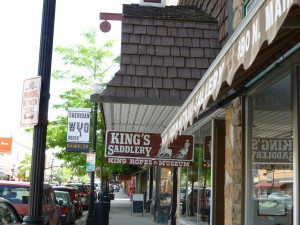 Born in Douglas, Wyoming, in 1923, Don King was the son of an itinerant ranch hand, Archie King. By the age of 14, Don learned to tool leather as he supported himself with odd jobs at ranches and rodeos. He sold and traded wallets, belts and other small gear. “I traded for pants, shirts, hats, spurs, anything. Sometimes I ended up with nothing.”
Born in Douglas, Wyoming, in 1923, Don King was the son of an itinerant ranch hand, Archie King. By the age of 14, Don learned to tool leather as he supported himself with odd jobs at ranches and rodeos. He sold and traded wallets, belts and other small gear. “I traded for pants, shirts, hats, spurs, anything. Sometimes I ended up with nothing.”
King worked on ranches throughout the West, finally settling down in Sheridan, Wyoming in 1946. There he became an apprentice to expert saddle maker Rudy Mudra. King assisted in the building of saddles and created piecework for local cowboys.
After acquiring his own ranch he committed his time to that enterprise until in 1957, when he devoted himself full-time to saddlemaking and leather tooling. King preferred to focus on highly ornamental trophy saddles like those given as prizes in rodeo competitions. During this time, he developed his own style of tooling. A style characterized by wild roses “with a distinctive shape, as though they were viewed from a 45-degree angle.”
By 1961, when King opened his own business on Main Street in Sheridan, he was well-known among ranchers and rodeo stars for his impeccable craftsmanship. This artistry and precision is best demonstrated in the making of the saddle type he created, the Sheridan-style saddle. The Sheridan-style saddle is “in its general form, a classic high plains roping saddle: short, square skirts; a low cantle with a broad Cheyenne roll…” But the most distinctive element is the wild rose (Sheridan Rose) tooling. King also used unusually deep stamping to give “greater three-dimensional depth to his tooling…”
His skill earned King the PRCA World Championship Saddle contract for 6 years. Some of these saddles are displayed at the National Cowboy Hall of Fame and PRCA Rodeo Hall of Fame. The honors King received for his works include: Chester A. Reynolds Award from the National Cowboy Hall of Fame, The National Heritage Fellowship for the Folk Arts from the National Endowment for the Arts, and the Governor’s Quality Business Award for the State of Wyoming. King was also a founding member of the Traditional Cowboy Arts Association.
Through the years King’s saddles have been acquired by everyone from local Wyoming cowboys to celebrities and dignitaries such as: Queen Elizabeth, Ronald Reagan, and the Crown Prince of Saudi Arabia.
King’s Saddlery & King’s Ropes is a must stop in Sheridan. Not only can you walk back to the rope shop and pick out your very own custom rope, but there is a Museum off the rope shop filled with saddles of any style along with Old West collectibles. But beware it is extremely easy to walk in empty-handed and walk out with empty pockets…I speak from experience! But guess where I’ll be next week…?
SOURCES:
http://www.sheridanwyoming.org/history/buildingsmuseums/kings-museum/
http://www.kingropes.com/thekings.htm
http://www.cowboysaddlery.com/donking.html
**Photos are mine except the one of the Sheridan style saddle it is property of www.sheridanwyoming.org**
POLO ANYONE? BIG HORN AND FLYING H POLO CLUBS IN WYOMING!
I don’t know about y’all, but when Cookie and me are in the mood for a bit of “the sport of kings” well the first place we think of headin’…Sheridan and nearby Big Horn, Wyomin’, of course!
One of the ten largest polo clubs in the United States today is the Big Horn Polo Club near Sheridan, Wyoming. There are forty-five, full-time members including the last three winners of the U.S. Open. Some of the best American polo players still make a pilgrimage to the Big Horn Polo Club, and the most prestigious polo breeding operation in the world is located there.
During the late 19th Century, Englishmen and Scotsmen moved to the area purchasing ranches usually with the intent of breeding thoroughbred horses. With them they brought the game of polo, which they taught to their ranch hands.
The first spectator game of polo, in Wyoming, was played on July 4, 1893 at the Sheridan fairgrounds. The hour and ten minute game pitted Beckton against Sheridan. Both teams were primarily composed of British players, including Captain Pete Stockwell a British officer formerly stationed in India, who played for Beckton.
The umpire during that game was Frank Grouard. Grouard was captured by the Sioux in 1870. He lived with the Sioux until he joined the U.S. Army and scouted for General George Crook. After the Indian Wars, Grouard came back to the Big Horn area and went into the horse business.
Not long after over a thousand spectators witnessed that first polo game, Scotsman Malcolm Moncreiffe moved from Powder River to the Big Horn area and built a polo field and breeding operation in 1898. Moncreiffe’s breeding operation was one of the finest in the world, and he exported Wyoming-bred thoroughbred polo horses and foxhunters to England. Moncreiffe also provided over 20,000 of his Wyoming thoroughbreds to the British cavalry and artillery during the Boer War.
Along with building his breeding operation, Moncreiffe developed a polo team with his friend Bob Walsh. Bob Walsh, a former piano player in a whorehouse in Miles City, Montana, was by this time the president of Moncreiffe’s First National Bank in Sheridan. By the turn of the century, Moncreiffe and Walsh traveled with their team to Colorado Springs winning a tournament on the lawn of the Broadmoor Hotel. The tournament featured several Army teams, a Denver team and a team from Kansas City.
But it wasn’t Moncreiffe or Walsh who led their team to victory, but genuine cowboy, John Cover. Cover was a bronc rider, steer roper, relay rider and cattleman. As a teenager he started working for Moncreiffe. Cover was eventually put in charge of the polo operation and evolved into one of the top players in the United States. He quit Moncreiffe after a dispute and was immediately hired by Goelet Gallatin who owned the Circle V Polo Company in Big Horn.
The Circle V was started at the end of the First World War, and became one of the premier polo operations in the world. The Circle V expanded its polo operations to include more than 150 top brood mares, and established a winter location in Aiken, South Carolina. Broodmares from the Circle V were sent to top international players throughout the world including Tommy Hitchcock, Ambrose Clarke and Deveraux Milburn. When Cover arrived at the Circle V, Hitchcock and Milburn trailed him in an attempt to acquire a few of his secrets. Cover became such a well-respected player, he was asked to join a team of Americans traveling to England. He refused stating “he had cows to look after.” Cover was known as the second-best Back in the United States, behind his protégé Milburn.
By the 1920s and 30s, world class horse breeders were firmly established in the area including Cameron Forbes, Alan Fordyce and O.H. Wallop. These men also established polo teams and rivalries, friendly and not, resulted in local games benefiting charities such as the Salvation Army, Red Cross and local charitable organizations. Many of these thoroughbred breeders had been in business over 30 years, producing some of the heartiest horses on Earth.
In 1948, the Neponset team repeated history on the lawn of the Broadmoor Hotel winning the National 12-Goal Championship match. Bloodlines of six Kentucky Derby winners were present on that team.
But polo started to fade from the local scene in the late 1950s. Bob Tate began a resurgence of the sport, in 1963, with Malcolm and John Wallop and a Tepee Lodge team.
By the early eighties, the Moncreiffe field was sold and a group of players established the Big Horn Equestrian Center including the Big Horn Polo Club. In 2000, two teams with their breeding operations in Sheridan won the U.S. Open.
The Flying H Polo Club, started on what used to be the Circle V, became one of the premier summer clubs in the United States offering high-goal polo. Some of the top international players have participated at the Flying H, including eight U.S. Open winners.
If y’all are interested in takin’ in a game, no need to high-tail it across the Atlantic. Just set sail on a prairie schooner to Sheridan where three days a week from July to Labor Day you can see “the game of kings” at either the Big Horn Polo Club (the oldest polo club West of the Mississipp) or at the Flying H Polo Club.
Now see, Cookie and me we’re just full of culture and the like. Why we might go so far as to bathe before headin’ on over to the polo field.
SOURCES:
http://www.poloplayersedition.com/new/sept04.html
http://www.sheridanwyoming.org/activities/weekly-events/polo-matches/
http://www.flyinghpolo.com/history.htm
Blair, Pat, Prater, Dana and the Sheridan County Museum. Images of America: Sheridan. Arcadia Publishing, 2008.
JIM JENNINGS 1909 WILD WEST SHOW!! IF YOU DON’T ATTEND IT WILL BE YOUR LOSS!!
WHOO-EEE!! I don’t know ‘bout y’all but Cookie was sweatin’ bullets at the rodeo watchin’ Cal ride that man-killer and then the thrill of the Bride Race! Why the ol’ coot even shed a tear durin’ the ceremony…Yes ya did ol’ man and don’t go blamin’ it on dust…
Now that we’ve spent some time followin’ in Cal and Josie’s tracks… Cal asks that y’all please back away now … And ya’ll have read (I hope) the final chapter of RACE TO MARRY let’s head to the Sheridan fairgrounds and get a look at the actual 1909 Wild West Show that planted a seed in my mind and grew into a story (that kinda smarts a bit, too).
The October 2, 1909, and October 5, 1909 issues of the Sheridan Daily Enterprise, reported on a Wild West Show and rodeo organized by Jim Jennings. The show ran from Thursday through Saturday, but it was so thrilling and drew such large crowds that a half-page ad in Saturday’s paper announced a special show was planned for Sunday. “IF YOU DON’T ATTEND IT WILL BE YOUR LOSS: THE SHOW COMMENCES AT 1:30!”
From the accounts in the newspaper, the participants were Sheridan locals or from neighboring communities. Events included a marathon, a hold up of the Deadwood stage, roping and tying exhibition, a relay foot race with four teams, a wild horse race, and a pony express ride; just to name a few.
One of the novelty races was the midnight race. “The most laughable event of the day.” Contestants started 200 yards from the wire and rode to the front of the grandstand. There they donned longshirts, mounted and raced around the track. For this race “A fast horse counted for little…It was the handy man with a shirt who won.”
For another race contestants were required to carry umbrellas. Then they rode to the wire where they “turn their coats wrong side out, light a cigar and ride with umbrellas raised.”
While the novelty races and trick exhibitions entertained the crowds, two events stole the show: bronco-busting and the race for the bride. Reports in the Enterprise, exhibit the bronco-riding held quite a few exhilarating moments. “Corkscrew, a wild outlaw, threw every man, Bud rich went down like the sound of a pile driver hitting the top of a wet log.”
“Clyde Brown on Aeroplane had a narrow escape in his broncho [sic] busting contest. He was thrown and his foot caught. People averted their heads for fear the crazed horse would stamp the man to death. But by a dexterous twist Brown himself got loose from his perilous position in safety.”
But the climax of the bronco-busting was the ride of Jim Jennings on the back of Corkscrew. Jennings was a Sheridan local with a ranch on Mead Creek, fourteen miles from town. He traveled with Buffalo Bill for four years, touring in Europe in 1903 and 1904. “He is one of the best riders in the state, and that is the same as saying the best in the world, for Wyoming horsemen have no superior.”
Corkscrew entered the rodeo a noted man-killer, sending a Buffalo, Wyoming man to the hospital for several weeks and severely injuring another cowboy just a year before. Jennings, having few equals as a rider, was game to ride Corkscrew and subdued the outlaw. However, Corkscrew had the final word sending Jennings to the ground with a hard thud on his back. “Jennings is carrying around a fractured rib as a memento of the occasion.”
The crowd went wild for the “Race for the Bride.” The bride’s name was given as Hazel Foster and Lillian Foster. However, it appears as Hazel Foster in most records and on Sheridan’s official website. The “grooms” name was Harry Lewis. Lewis participated in the pony express ride, bronco-busting and the wild horse race, as well as the bride race. While riding his bronc, he didn’t place and he came in second to Sage Collins in the wild horse race, but he would outride Sage to capture the bride.
The “lady and the cowboy catching her would be married on the spot. Judge Story, it was said, would perform the ceremony without cost.”
All we know of Hazel Foster was she hailed from Rock Creek, and was obviously an excellent horsewoman as she gave her pursuers a run for their money. Hazel was given a 200-yard head start and made good use of it not intending to get caught.
“Sage Collins, on his favorite roan, was after her, but whether or not he would have overtaken her will never be known. Harry Lewis started late and realizing that Sage could never be overtaken, he doubled back, intercepted the bride on the last quarter, and carried her to the grandstand,” much to the crowd’s delight. Harry Lewis won $50 and the hand of Hazel Foster.
Jennings show was such a success he decided to take it on the road. By the end of Sunday’s performance he already had a long list of applications from the Wyoming cowboys participating. Enough applications, in fact, that he planned to take the show to Billings, Montana the next week.
As for the bride and her cowboy, I am not sure I would ever want to know what happened after the race. I prefer to make up my own happily ever after ending for the couple.
So from two newspaper reports Cal and Josie’s story sprouted. I reduced the show to one day. Cal’s character emerged from Jim Jennings wild ride on Corkscrew and Harry Lewis’ daring capture of his own bride. Yes, Siree, it takes two men to make one of Cal. But it all started when I read about a young woman, Hazel Foster, agreeing to be the fox to seven Wyoming hounds. What would make her do such a thing? Excitement? Was she a spinster? Or did she need to save the family ranch? From these questions, and Hazel’s race, Josie Allison was born.
Hope y’all enjoyed RACE TO MARRY and the look behind the scenes!
SOURCES:
THE SHERIDAN DAILY ENTERPRISE. Saturday, October 2, 1909. Sheridan, Wyoming: pages 1 and 4.
THE SHERIDAN DAILY ENTERPRISE. Tuesday, October 5, 1909. Sheridan, Wyoming: pages 1 and 4.
COOKIE SLEPT HERE! THE SHERIDAN INN!!
Don’t know about y’all, but after kickin’ it up at the Mint, Cookie and me had to find a place to bed down. So, we beat our boots on over to the Sheridan Inn where it’s always in apple pie order.
Ya never know who yer gonna meet at the Inn, so keep a sharp eye. Who knows ya might even see Cal and Josie, at least in passin’. Those two are always on the move. I’ll be given the tour since Cookie’s still sawin’ on the logs; dang lazy ol’ coot sleepin’ off a rounder.
By 1892, the railroad was built as far as Sheridan, Wyoming and westward expansion was at the height of popularity. The railroad brought adventurous souls out West in search for a new life, as well as transporting agricultural goods, coal and cattle back East. Recognizing the advantages of the railroad in establishing the new frontier, and the need for lodging along the line the Sheridan Land Company, with the blessing of the Burlington and Missouri Railroad, undertook the ambitious task of building the Sheridan Inn.
The Inn’s design was inspired by its architect, Thomas Rogers Kimball’s visit to a Scottish hunting lodge and included 69 gabled windows. Construction of the Inn began in December of 1892 and was completed six months later. The Inn boasted the first running-water bathtubs and electric lights in town, and the first telephone line was connected to a downtown drugstore.
George and Lucy Canfield were the Inn’s first managers and were known for their extravagant dinners and gracious hospitality. George was responsible for acquiring the Inn’s furnishings; among them was the saloon’s bar. The bar was made from American oak with a mahogany countertop, and included front and back bars complete with wine cooler, liquor cabinet, and cigar case. If you didn’t get your fill at the Mint you can still belly up to this bar today, where Buffalo Bill Cody used to by rounds for the house. Make sure you order a Wyoming Slug a concoction of champagne and whiskey popular with the saloon patrons of the past.
Western legend Buffalo Bill Cody had many ties to the Sheridan Inn. In 1894, Cody became a Sheridan Land Company partner when he purchased the Inn’s furnishings and opened the W.F. Cody Transportation Company behind the Inn. The Canfields continued to manage the property, which now included a livery barn, stage line (part of Cody’s line from the Inn to Deadwood, SD), freighting service, and mail carrier. The Inn’s mud wagon ferried passengers back and forth from town about a mile away.
Cody auditioned local cowboys for his Wild West show from the comfort of the Inn’s sprawling porch. A few of the cowboy’s wives were featured in one of the Wild West show’s acts. The wives rode sidesaddle and, with their partners, performed a square dance on horseback. For many years the Inn sponsored a Wild West show as a fundraiser that also honored its extraordinary past.
Not all Cody’s visits to the Inn were pleasant. In 1902, Cody’s son-in-law, Horton Boal committed suicide in room 52 of the Inn. Then in 1905, Cody visited the Inn while seeking a divorce from his wife Louisa. The divorce was not granted and after that, Bill Cody didn’t visit the Inn until 1910 as plans for the town of Cody, Wyoming took much of his time.
Author Ernest Hemingway was another frequent guest at the Sheridan Inn. Hemingway wrote parts of A Farewell to Arms from a room on the third floor of the Sheridan Inn from August 3rd to 8th, 1928. Eventually, he found the activity at the Inn to be too distracting to his productivity, and he went in search of quieter locations. His search for peace ended at the Spear-O-Wigwam ranch in the Big Horn Mountains, where he finished the novel. Hemingway returned to the Inn several times in the 1930s to visit. (I told Cookie to keep it down, but the old codger was really tyin’ one on, and once he gets to whoopin’ it up well…)
Other notable visitors included, Bob Hope, Robert Taylor, Will Rogers and a number of U.S. Presidents.
The Inn hit hard times in the late 1930s as owner after owner passed through its doors struggling to maintain the building and operate the business. In 1965, the Sheridan community feared the worst that the Inn would have to be demolished. The Sheridan County Historical Society tried to save the Inn holding an auction, but proceeds fell short.
New York heiress, Neltje, purchased the Inn in 1967, and became known as the “woman who saved the Inn.” The saloon re-opened in 1968, and was followed shortly with the re-opening of the dining room, Ladies Parlor, and Wyoming Room. During Neltje’s two-decade run as the Inn’s owner the Inn’s place in Sheridan was revitalized. The Inn hosted many public events and dinners. Struggling to make money, the Inn’s doors closed again in 1986. Despite the purchase of the Inn by the Sheridan Heritage Center and plans to revive the historic building, the Sheridan Inn is once again facing financial difficulties and looking for someone (s) to step forth and resuscitate this Sheridan institution.
Cookie and me would sure hate to see the old girl go. We shared a great steak and even better bread puddin’ at the old Inn not too long ago.
But on a brighter note, and let me tell y’all the tongues are waggin’ about that rodeo cowboy Cal Renner upstairs in his room with local girl, Josie Allison! Cookie is blushin’ to beat the band! Me…I’m enjoyin’ this show ‘til the big rodeo this Saturday! Whoa, I think I just saw Ma and Pa Renner headin’ upstairs…
SOURCES:
http://www.sheridaninn.com/history.html
Blair, Pat, Prater, Dana and the Sheridan County Museum. Images of America: Sheridan. Arcadia Publishing, 2008.
**Photos in color belong to Kirsten Lynn. Black and White photos are property of the www.sheridaninn.com**



